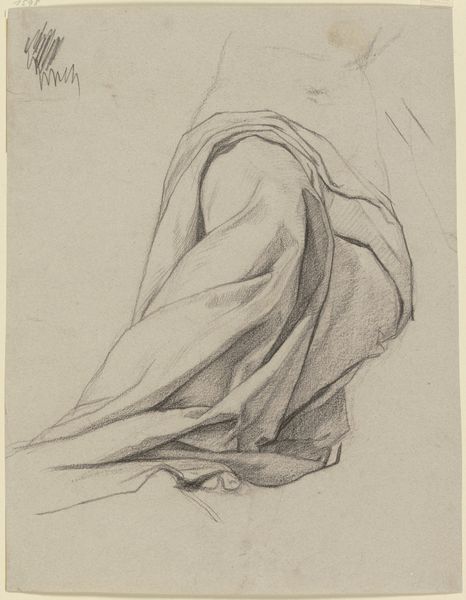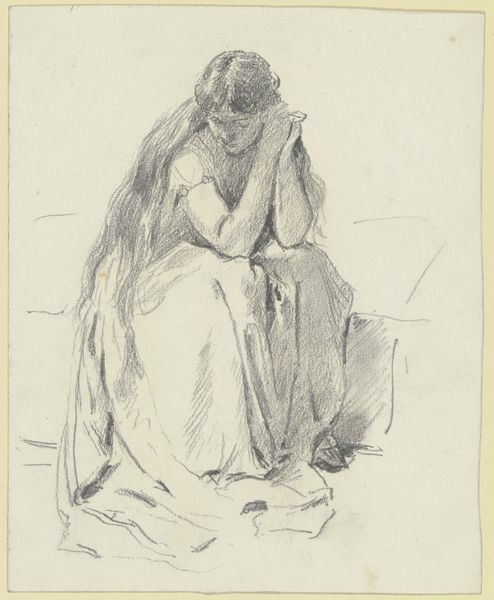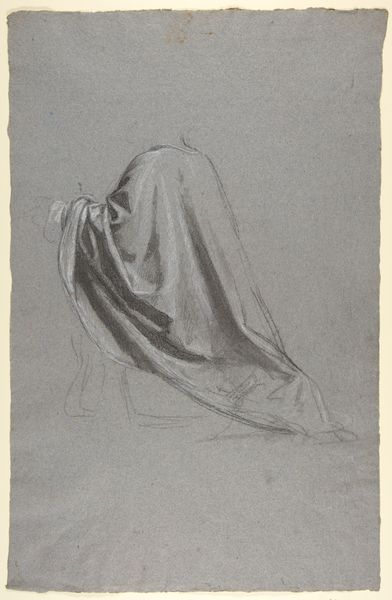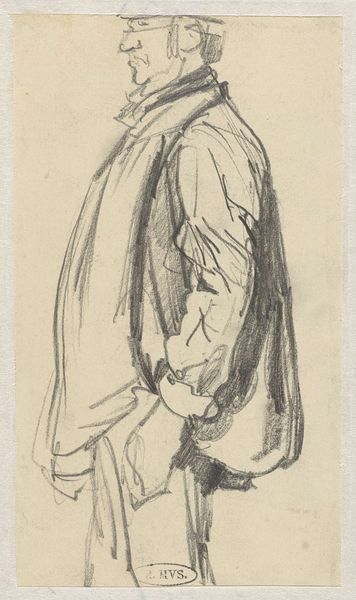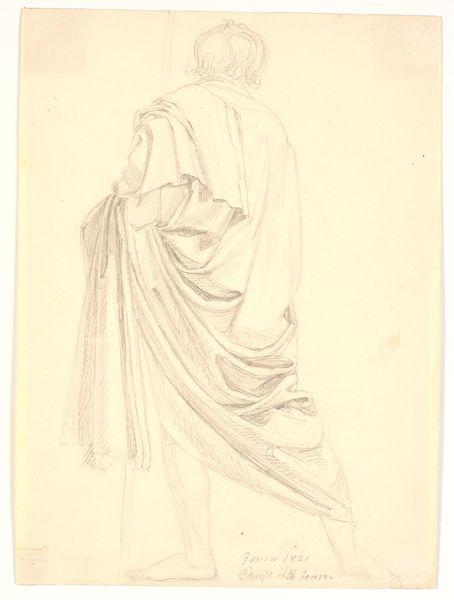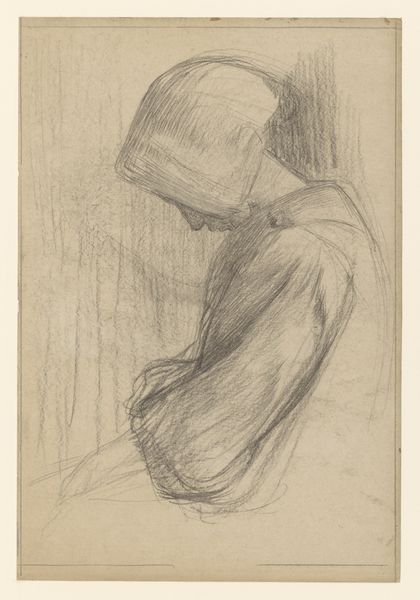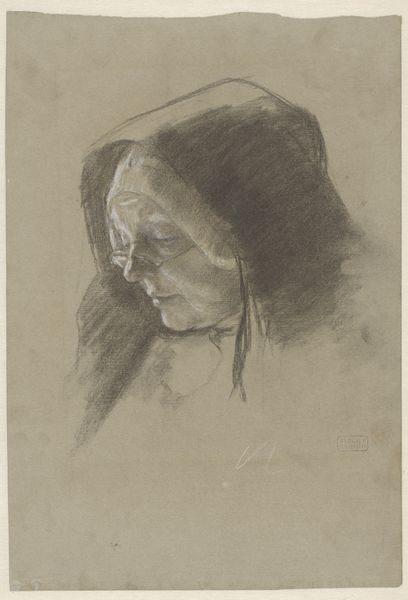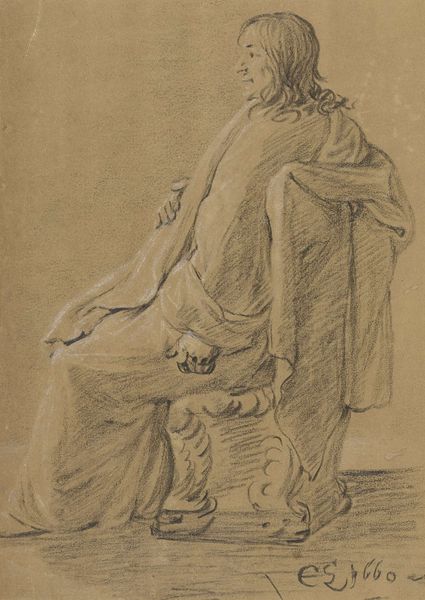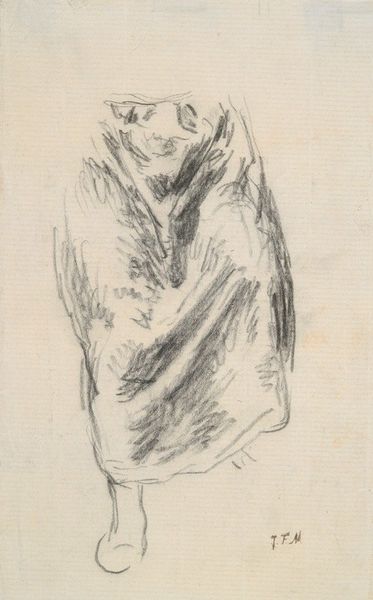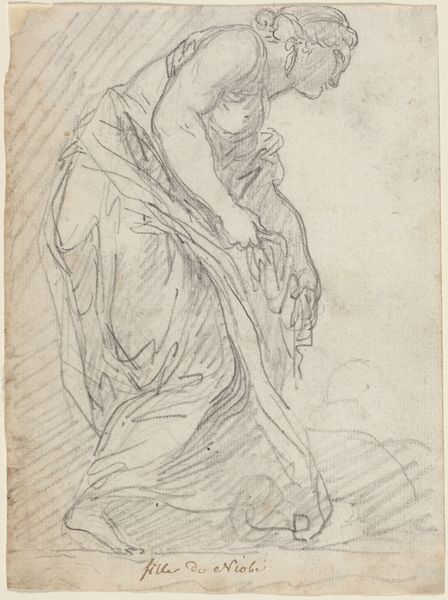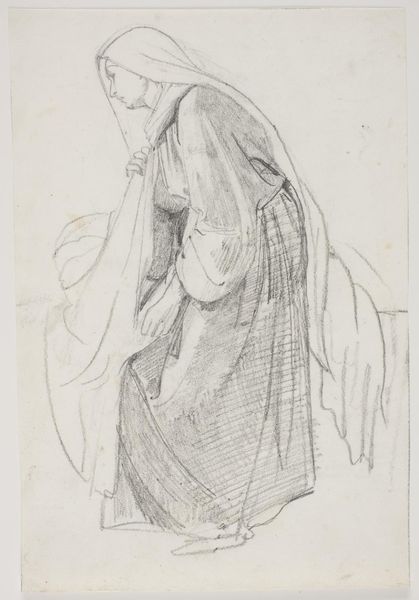
Study for Vieille Italienne(recto); Drapery Study (verso) 1856
0:00
0:00
Dimensions: Sheet: 17 1/16 x 11 5/8 in. (43.3 x 29.5cm)
Copyright: Public Domain
Curator: Immediately, a somber mood settles in. The gray paper is overwhelmed by these soft pencil lines. A figure consumed by shadow and drapery... It speaks volumes before any context is even provided. Editor: You're right. What you're seeing is a pencil sketch titled "Study for Vieille Italienne," and on the reverse side, there’s another sketch called "Drapery Study." It was completed by Edgar Degas around 1856, and we believe it was part of his broader exploration of representing marginalized women during the 19th century in France. Curator: So, the piece operates on several layers then. At the surface, Degas focuses intensely on the fall of fabric, capturing nuances of light on cloth with an astounding sensitivity to line and shading. But then that’s combined with the deeper resonance related to representing a woman shrouded, quite literally hiding her face in her hands. This gesture and veil are not simply formal exercises. Editor: Precisely. Remember, Degas came of age during an era when rapid social and political changes shaped cultural norms, particularly affecting women’s roles in society. Here, we observe not merely an image of an Italian woman, but a powerful comment on isolation, anonymity and potentially the weight of societal expectations or constraints that might make a person wish to disappear entirely. Curator: You can read into how he utilizes Romanticism—especially that emotional intensity, juxtaposed with a subtle nod to academic precision—which lends the piece an extraordinary power. The combination results in something incredibly emotive. Look how skillfully he models forms with mere lines, creating a sense of depth and tangible presence. This elevates it far above a mere study. Editor: Right. Even with something so stripped down as a preliminary pencil drawing, Degas’ ability to instill empathy is really showcased. The work speaks clearly across time regarding the complex lives and overlooked experiences of women who often navigated very difficult circumstances, and particularly women like this who existed outside mainstream cultural narratives of France at the time. Curator: A quiet observation indeed. To see so much said with a handful of lines. Editor: And it also forces us to think about those who were and continue to be voiceless in our societies, as Degas captured so sensitively almost two centuries ago.
Comments
No comments
Be the first to comment and join the conversation on the ultimate creative platform.
